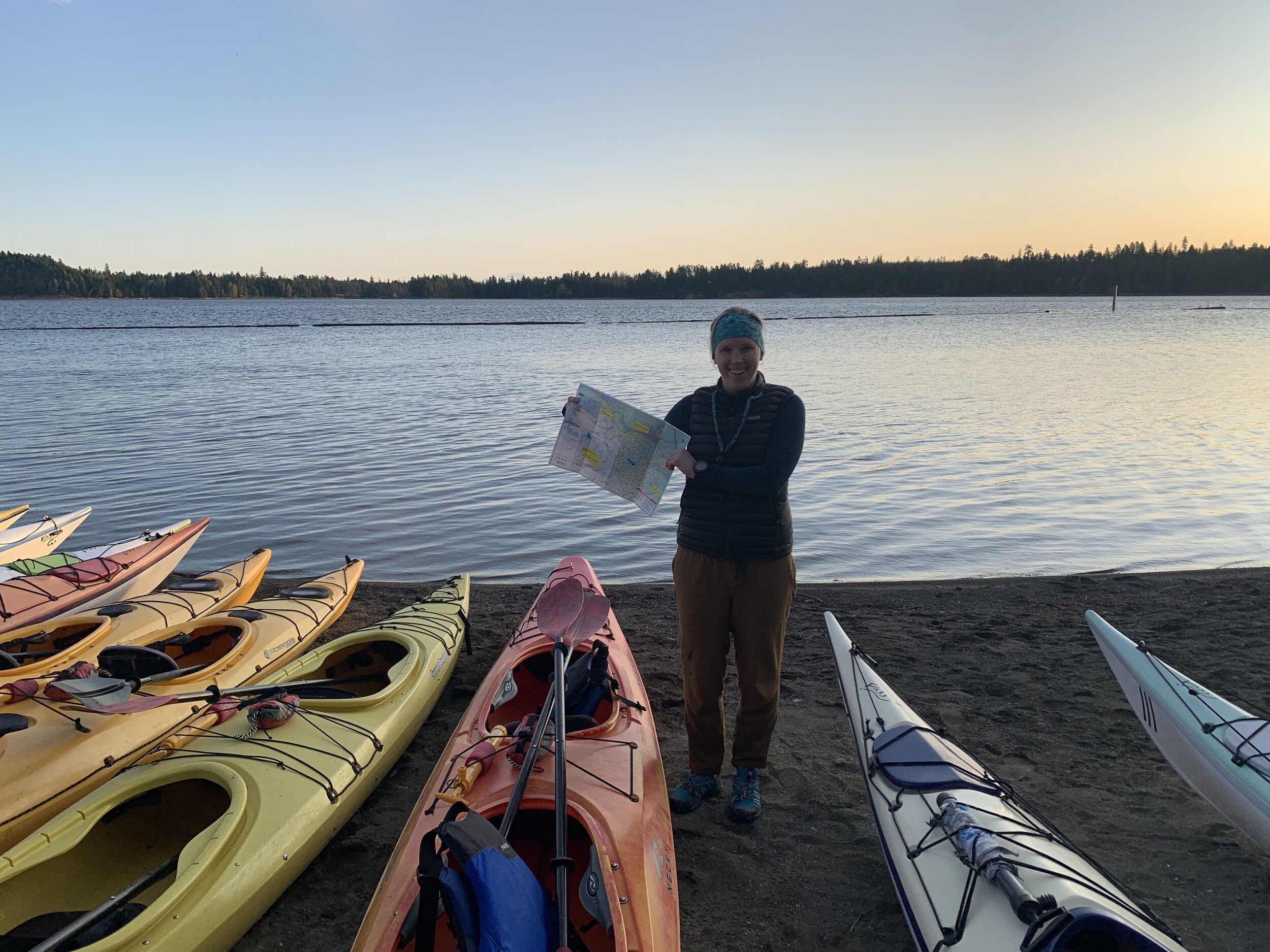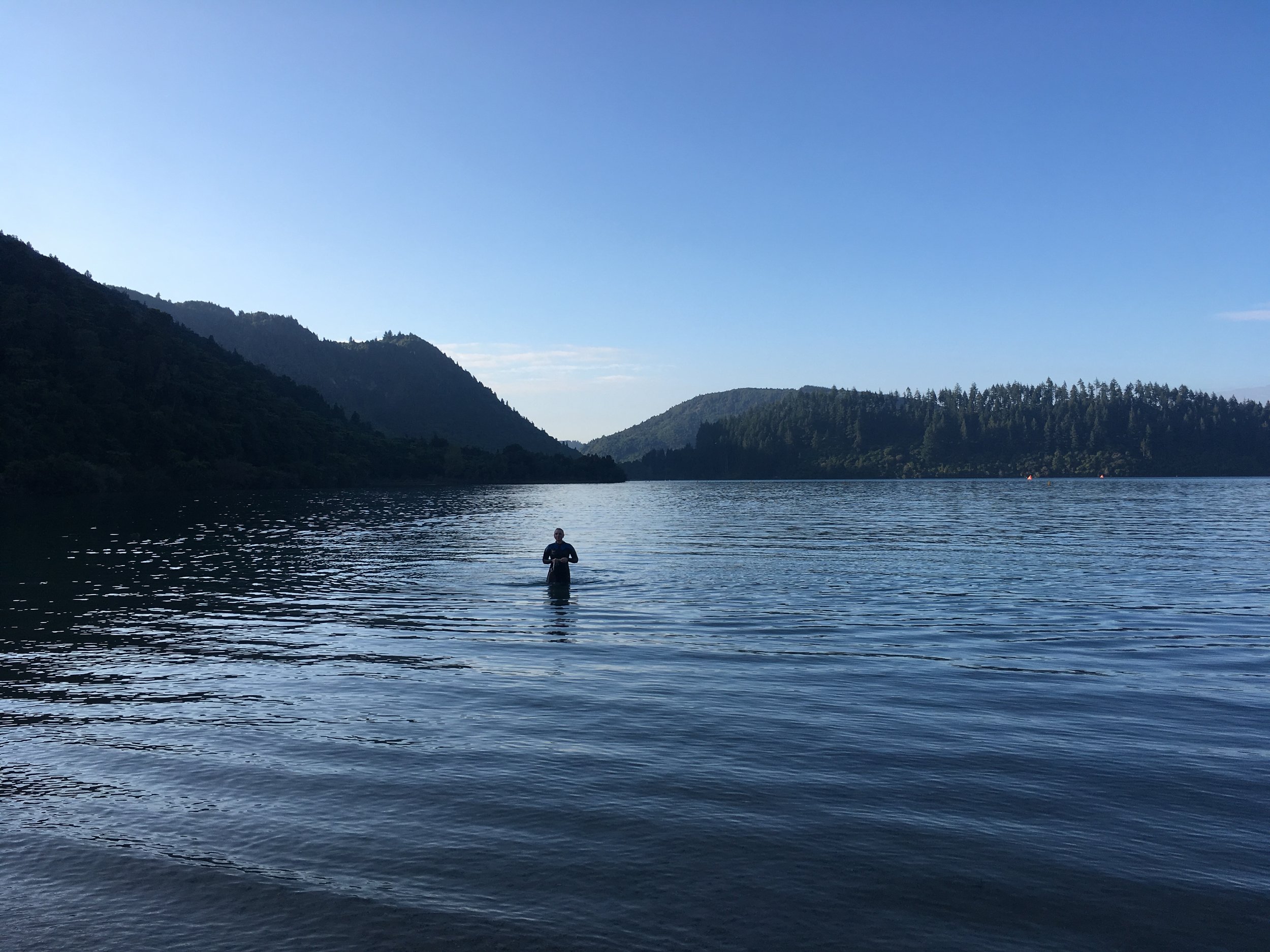Dear Adventure Racing, I’m New Here.
My mouth was dry and the muscles in my upper body burned, deeply. Waves were repeatedly crashing over the side of our double kayak. Unlike practice, when my teammate Liz and I would chit chat and take in the scenery, we paddled to the quiet rhythm of our heavy breathing. This was the start of our very first adventure race. We were staring down a 50 kilometer, 7+ hour race with very little knowledge of what to expect or where we’d be going.
Moments after planning our route, Liz and I set out on Stage One: Paddle Comox Lake
Wind the clocks back a few months to our Googling of “What to Expect in a Single Day Adventure Race” or “Adventure Racing 101” and we had trouble finding much info we could use for this particular race. As we came to understand, part of the excitement of adventure racing is all the unknown elements like… where the race course actually goes. If you’ve been considering this wild and wonderful style of racing, here are three key things we’ve uncovered with the Mind over Mountain Adventure Race (MOMAR) firmly in the rearview mirror.
First, train with your teammate(s) as often as you can
The mind can go to strange places under the duress of a race and the body can reveal aches and pains once thought were resolved. Working to communicate with and support my teammate as we both experienced these challenges in racing together brought out a cool new dynamic. From refining our kayak technique to knowing when to push through the pain of that 6th hour. I wouldn’t have been able to cross the finish line without each of us getting to know our respective strengths and limiters in training.
Looking ahead:
Pick a teammate you can get along with as much as Liz and I do. We had a blast hanging out all the time working toward a common goal. We got out biking, paddling and running most weeks together despite hectic work and travel schedules. I’d attribute this win to syncing up our training calendars in advance as much as possible. We were able to hold each other accountable and check-in with each other.
The vibe may be casual but every minute counts
We pored over the MOMAR’s social channels and asked previous racers what to expect with this race and we got answers like “it’s a lot of fun” and "wear a costume”. From all accounts, this would be a casual fun day in an awesome mountain bike destination (Cumberland, BC). But the 50k course demands respect from its racers. The day is long and the cut-offs require athletes to be continuously moving, fast.
Looking ahead:
Over the course of the day we covered over 1300 meters of elevation and an unreasonable amount of waves that ended up in our laps. We’ll adapt our training to include a much higher ratio of elevation focused runs/rides. On the kayak front, we’ll have to brave those rough, windy days down at the lake and get out in all conditions.
Colour coordinated: Liz and I back on our feet to find checkpoints, mid-race.
Lastly, train your brain not just your body
A few months out from the MOMAR my plan was locked into Training Peaks and I was steadily turning those workouts from grey to green. My plan called for skill building in orienteering (way-finding is a major part of the race) but in hindsight I didn’t dedicate nearly enough time towards it.
Liz and I started to feel fatigued at the second transition into trail running and the distraction clouded my decision making. This particular portion of the race had us looking for a cluster of checkpoints in any order we see fit. The random order derailed us from thinking linearly. Working on mental focus with a tired body through orienteering practice is key.
Looking ahead: We’ll need to troubleshoot taking the guesswork out of later stages in the race. We can highlight our planned route when we’re fresh and divide up memory responsibilities to break down the taks into bite size plans.
Ask Liz and I if we plan to do this race again and I’ll be honest, we wouldn’t instantly reply with a resounding yes. The training and mental toughness required isn’t something to take lightly. But give it time, I’m sure team #OverStoke will tow the startline once more.












Looking for quick, scenic trail runs in the Sea to Sky? Explore five favourites near Whistler, Squamish and Pemberton featuring glacier lakes, alpine vistas and forest trails perfect for adventurous runners.